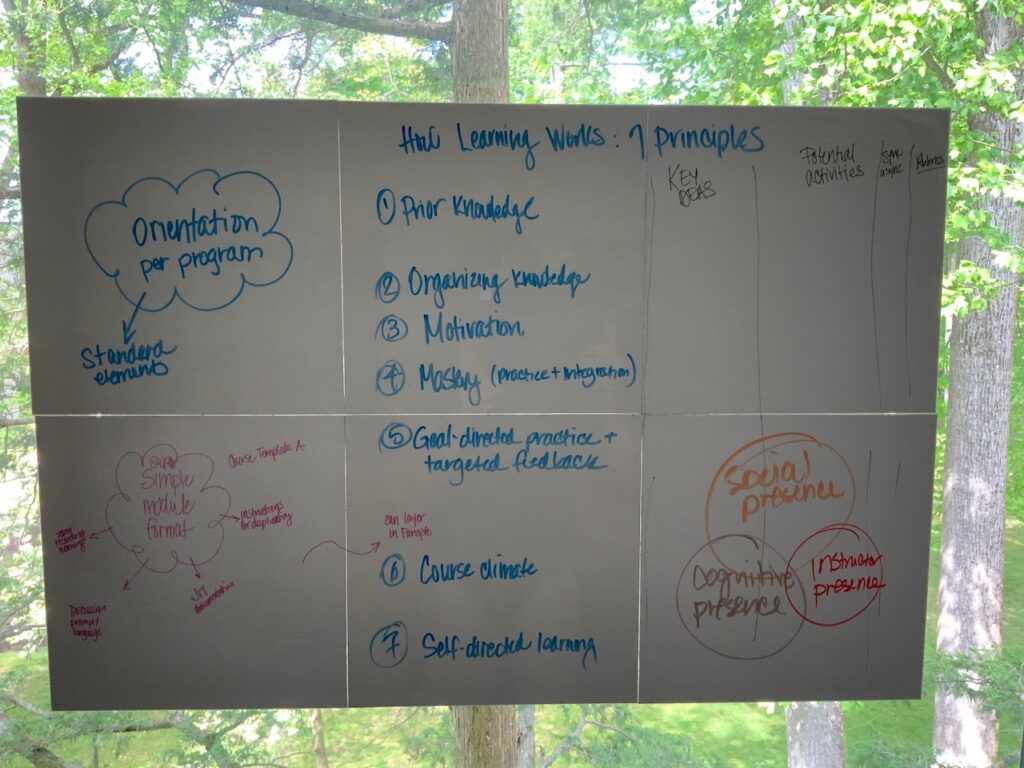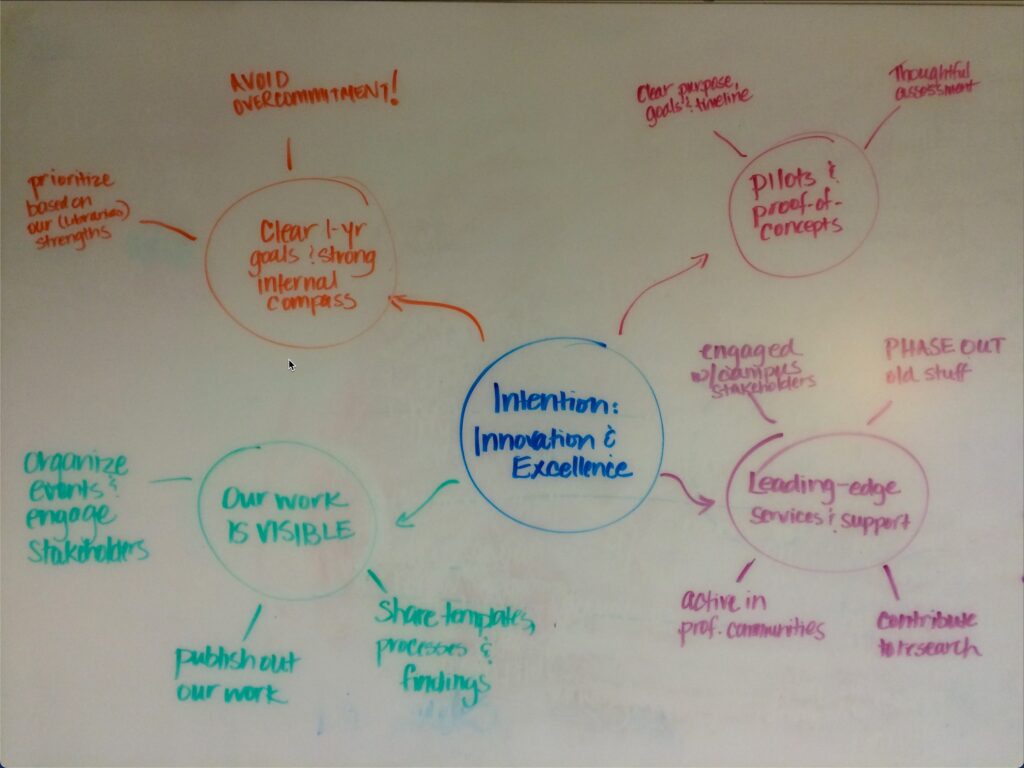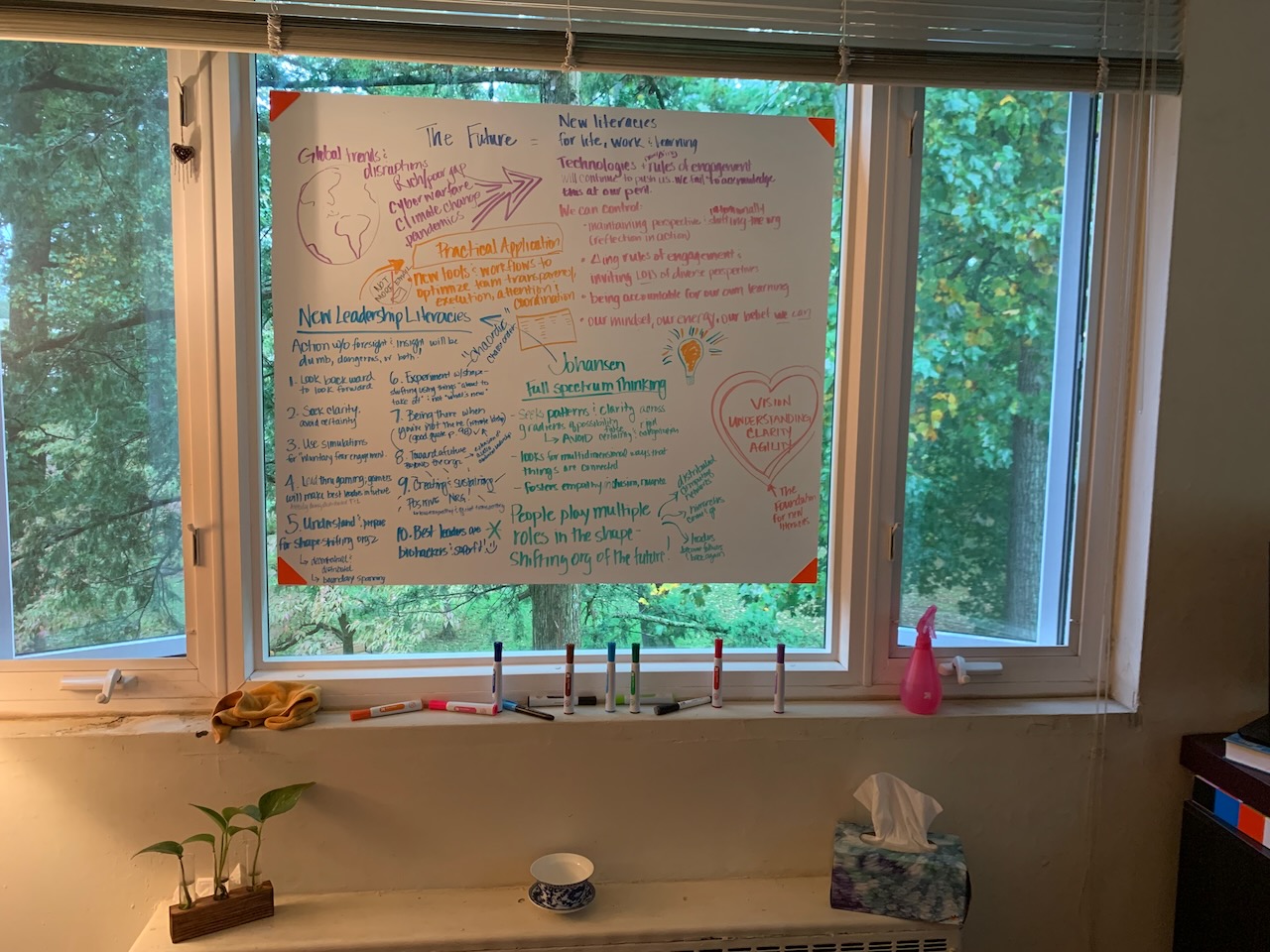For productivity, I can’t live without whiteboards. My Ikea whiteboard at home goes with me wherever I want to think. I’ve insisted on having a whiteboard at work and wonder why none of my offices had them before I moved in. Now, I’ve become obsessed with searching for a digital whiteboard that meets my needs and is easy for others to learn. (More on that quest in next week’s post).

Here’s why whiteboards are essential productivity tools: Whiteboards make thought visible, visual, spatial, and collaborative.
Visible
Let’s compare: I’m sitting at my computer writing these words. Yes, my thoughts are visible to you, and written text is great for details, although you’ll need to read the full post to understand fully. Or, I can share a picture of my whiteboard, and you’ll get the gist of my thinking immediately.
Visual
Stick figures, arrows, boxes, and pictures help us see “bigger picture,” feel the “vibe,” and identify the gaps in our thinking. We experience the Gestalt Principle: the ability to recognize patterns and hierarchy, group similar elements together, and perceive objects.
Spatial
Question: Where did I first use the word “office” in this blog post? ? It’s okay, it’s not memorable. Yet, on a whiteboard, words and images have location, direction, size, and color. These characteristics help us see and remember connections years later—by simply looking at the image or recalling it to mind. Old whiteboard photos trigger memories for me, much like hearing a decades-old song or smelling fresh-cut grass does.
The three benefits above show that whiteboards can boost our productivity in ways we likely underestimate. But, the game changer is using whiteboards to collaborate.

Whiteboards make thought visible, visual, spatial, and collaborative.
Collaborative
Collaboration is a whiteboard superpower for two reasons: co-creation and persistence.
Co-creation: We are social, meaning-making creatures. Getting work done means communicating complex ideas in groups and turning them into action. How often have you heard or said, “We need to be on the same page?” Whiteboards help us co-create ideas, actions, and outcomes that benefit from the group’s mind-focused contributions.
Persistence: Whether digital or physical, we can continue to shape and build our ideas over time. Often, slow thinking wins. Magic happens when teams can refer to the original board, add ideas, move things around, and revisit as a group.

Whiteboards for the #Win
When I ask others about their preferred productivity tools, few mention whiteboards. Yet, they are a simple, accessible way to improve your thinking. It’s fun and energizing to stand up and work kinesthetically in a colorful, visual way on a physical whiteboard. Snap a photo and your whiteboard becomes a persistent artifact in your archive.
Note: Digital whiteboards offer a different experience, which will be the focus of next week’s post.
No whiteboard? No problem.
If you don’t have a whiteboard, try a large drawing pad, grab some colored markers, pencils, and post-its. Sit on the floor, go outside, or take the pad to a new space. Free your mind, let it wander as you draw. You will amaze yourself with what you can do in 30 minutes. That’s productivity!

